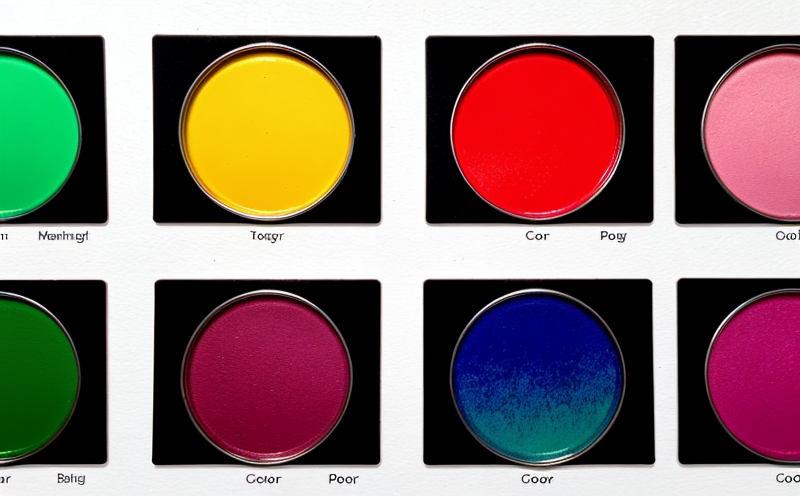EN 13201-4 Spectrum Testing of Road Lighting Installations
The European standard EN 13201-4 is a critical component in ensuring the quality and safety of road lighting installations. This standard provides detailed guidelines for measuring and evaluating the spectral power distribution (SPD) of luminaires intended for use in road lighting applications. The primary purpose of this testing is to ensure that the light emitted by these luminaires meets specified colorimetric and photometric performance criteria, which are essential for providing a safe and comfortable driving environment.
The testing process involves several key steps. First, the luminaire must be prepared according to specific protocols outlined in EN 13201-4. This includes ensuring that the luminaire is installed in a controlled environment where it can emit light without interference from other sources of illumination or heat. Once the luminaire is properly set up, the test begins with the measurement of its spectral power distribution using a spectroradiometer. The spectroradiometer provides detailed data on the intensity of light at various wavelengths, which is then compared against the reference spectra provided in the standard.
The results of this testing are crucial for several reasons. They allow manufacturers to ensure that their luminaires meet the stringent requirements set forth by regulatory bodies across Europe. This not only helps them avoid costly recalls but also enhances their reputation among consumers who value product quality and safety. For quality managers, compliance officers, R&D engineers, and procurement professionals involved in road lighting projects, understanding these standards is essential for making informed decisions about which products to use.
The testing procedure described above ensures that the color rendering index (CRI) of the luminaire meets specified levels. CRI is a measure of how well artificial light sources render colors compared to natural daylight. Higher CRIs indicate better color fidelity, which is particularly important for road lighting because it affects visibility and safety during night-time driving conditions.
Another aspect tested under EN 13201-4 is the color temperature of the emitted light. Color temperature refers to the apparent color of a light source as perceived by human eyes. It influences both visual comfort and aesthetic appeal. By controlling the color temperature within acceptable ranges, designers can create environments that are not only functional but also pleasing to look at.
Testing for compliance with EN 13201-4 is an ongoing process rather than a one-time event. As new technologies emerge or existing ones evolve, there may be updates to the standard that require retesting of luminaires. Therefore, regular maintenance and periodic recertification are necessary to maintain regulatory compliance.
It's worth noting that while EN 13201-4 focuses primarily on road lighting installations, its principles can also apply to other types of outdoor lighting where accurate color representation is important.
| Key Parameters | Description |
|---|---|
| Spectral Power Distribution (SPD) | The distribution of light intensity across different wavelengths, measured in lumens per nanometer. |
| Color Rendering Index (CRI) | A numerical value ranging from 0 to 100 that indicates how accurately a light source renders colors relative to a reference source like sunlight or incandescent lamps. |
| Correlated Color Temperature ( CCT ) | The temperature of an ideal blackbody radiator whose perceived color most closely matches the color of the light source, expressed in degrees Kelvin (K). |
| Industry Applications | Description |
|---|---|
| Automotive Lighting | Ensuring that headlights and taillights meet color specification requirements for enhanced visibility. |
| Public Lighting | Maintaining consistent performance across different locations, ensuring public safety during nighttime hours. |
- Avoiding discrepancies in perceived color due to variations in lighting conditions.
- Improving energy efficiency by selecting appropriate light sources that provide the desired visual effects without excessive power consumption.
Industry Applications
The applications of EN 13201-4 spectrum testing extend beyond just road lighting installations. It also plays a vital role in automotive lighting, public lighting, and many other fields where accurate color representation is essential.
- Automotive Lighting: Ensuring that headlights and taillights meet stringent color specification requirements to enhance visibility during night driving conditions.
- Public Lighting: Maintaining consistent performance across different locations, ensuring public safety during nighttime hours.
- Sports Arenas: Enhancing the visual experience for spectators by providing uniform lighting that accurately represents colors on playing surfaces and athletes' attire.
- Signage: Guaranteeing legibility of signs even under varying environmental conditions, such as fog or rain.
| Use Cases and Application Examples | Description |
|---|---|
| Testing LED Road Lamps: | Evaluating the color performance of LED road lamps to ensure they meet CIE recommendations for color temperatures. |
| Performance Verification: | Verifying that newly developed luminaires comply with current standards before going into production. |
- Regulatory Compliance: Meeting the strict requirements set by various national and international bodies ensures that products are safe for use in public spaces.
- Eco-Friendly Solutions: Providing accurate color information helps manufacturers develop more sustainable lighting solutions that consume less energy while still delivering high-quality light output.
Competitive Advantage and Market Impact
Compliance with EN 13201-4 offers several advantages for companies operating in the lighting industry. Firstly, it demonstrates commitment to quality and safety, which can be a significant selling point when competing against other firms that may not adhere strictly to these standards. Secondly, meeting such rigorous specifications can set higher benchmarks internally within an organization, encouraging continuous improvement and innovation.
From a broader perspective, compliance with EN 13201-4 contributes positively towards sustainability goals by promoting efficient use of resources through better color rendering capabilities. This aligns well with global trends toward greener practices in all sectors including manufacturing and retail.
- Innovation: Encourages the development of new technologies that push boundaries while maintaining high standards.
- Benchmarking: Sets internal targets for improvement, fostering a culture of excellence within organizations.
- Sustainability: Promotes efficient use of resources by enhancing color rendering capabilities, which is crucial in today’s eco-conscious world.





